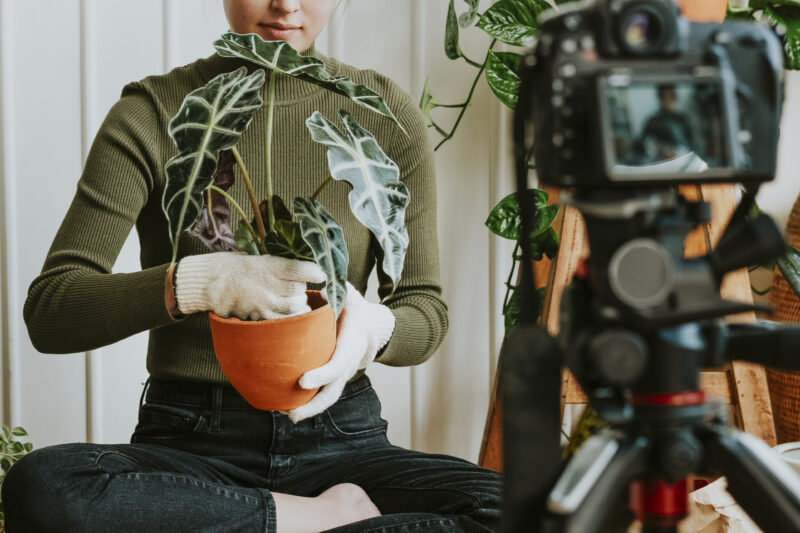In this article:
The functions of visual storytelling photography in modern marketing have gone far beyond mere decorations. Pictures can evoke emotion, spark trust, and build instant recognition. Visual representation is a pivotal tool for effective business communication. It shapes your audience’s perception of your brand and transmits its message faster and more easily than words.
Visual storytelling means more than creating aesthetically pleasing images. It infuses these images with a specific emotion. This emotion ensures your promotional strategies work. A well-timed behind-the-scenes shot or a portrait of a real customer can appeal to your clients better than the catchiest slogan.
In this article, we will teach you how to craft visuals with purpose, align your images with your brand tone, and apply this approach across different platforms. These practical tips will help you create strong and evocative narratives that reinforce your brand’s identity.
Brand Photography in Marketing
High-quality product photos are pivotal for successful brand promotion, but they are insufficient. To advertise your product effectively, you must integrate it within a story. And this story should appeal to your potential and current audience. Many visual elements can serve this purpose — people, places, props, etc.
Pictures are processed 10 times faster than words and can be understood in any language. Use this advantage to transmit your brand’s idea and create a lasting impression. Do you want your brand to feel warm and personal? Aim for natural lighting, candid compositions, and unpolished moments. Dramatic contrasts, clean lines, and editorial-style shots will work for bold and cutting-edge campaigns.
For instance, Patagonia represents environmental commitment and sustainability through green and earthy tones in their imagery. Glossier focuses on real people using their products in everyday settings. Minimal post-processing makes these photos more genuine and relatable.
Post-processing can be subtle, but it is essential for aesthetically appealing and attention-grabbing shots. Editing software choices should be determined by your budget and proficiency. Adobe Photoshop is considered the industry standard with high-end tools and advanced creative control. However, its price and steep learning curve may be daunting for small businesses and startups, making them seek cheaper and more intuitive options. Comparing Photoshop vs Luminar Neo lets you see that Luminar Neo uses AI-powered automation that speeds up editing and enhances lighting or skin tones. This fast and smooth workflow allows creators to produce high volumes of content. Customizable presets and batch processing ensure visual consistency to boost recognition.

Get 300+ Fonts for FREE
Enter your email to download our 100% free "Font Lover's Bundle". For commercial & personal use. No royalties. No fees. No attribution. 100% free to use anywhere.
Why Is Photography Important For Emotional Connection?
Photos are the fastest and easiest way to evoke emotions. If you want your audience to care about your message and feel something, visuals make it possible. A genuine expression, a moment of vulnerability, or even a subtle detail in an environment can trigger trust, curiosity, or inspiration.
Think about a founder portrait taken in a cluttered home office versus one in a polished studio. Neither of the options is 100% right or wrong, but these portraits will tell two different stories. The home office, with a lot of seemingly unnecessary details, represents genuinity and approachability. Meanwhile, a studio shot shows that the company values quality and professionalism.
Understanding how to unblur an image or define the founder’s face as a focal point is important in both cases. However, excessive processing with clutter removal and background replacement will ruin the authenticity of the home office photo. At the same time, bright colors and extra props will not work for a minimalist studio shot.
Similarly, a coffee brand can experiment with shooting locations depending on the intended emotion. A home setting appeals to people valuing comfort and self-care. The café shot, with baristas in motion and blurred street scenes through the window, is associated with community and momentum. It will work for energetic brands with urban vibes, building their campaigns around social connections.
Avoid excessive sharpening and oversaturated colors for a home shot. Use a wide aperture (like f/2.0–f/2.8) to create a shallow depth of field. Props like a half-read book or a plant in the background will immerse the viewers in this calming morning routine. The café picture should be taken with higher shutter speeds to represent movement and liveliness. The frame should include many details — people ordering, steam rising from machines, or light flares from windows. High-contrast edits with bright colors and dramatic filters will contribute to the overall hustle and bustle.
Conclusion
Effective branding marketing strategies often involve using imagery to tell stories, resonate with customers, and establish a reliable reputation. Visual stories represent not only your products and services but also your ideas and values. High-quality pictures go far beyond aesthetic appeal, triggering emotions and feelings to make your brand recognizable. When your photography consistently reflects your message and mood, you build a recognizable identity that feels intentional and personal, turning casual viewers into loyal clients.




